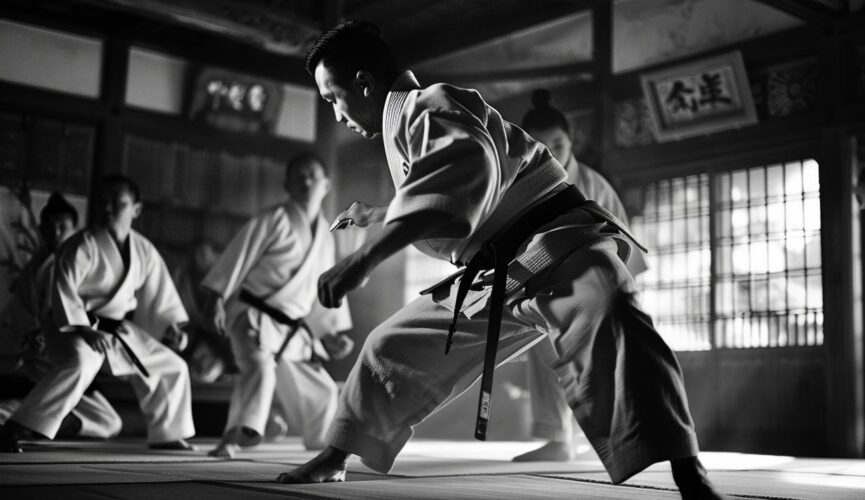Jiu Jitsu, a martial art with ancient roots in Japan, has a rich history shaped by early forms and influences. Originally developed as a crucial skill for samurais, Jiu Jitsu has played a significant role in Japanese culture and has integrated with other fighting styles.
Today, Jiu Jitsu continues to evolve with modernization, leaving its impact not only in martial arts but also in various sports globally. Come along as you explore the fascinating journey of Jiu Jitsu in Japan and its influence on the world.
Origins of Jiu Jitsu in Japan
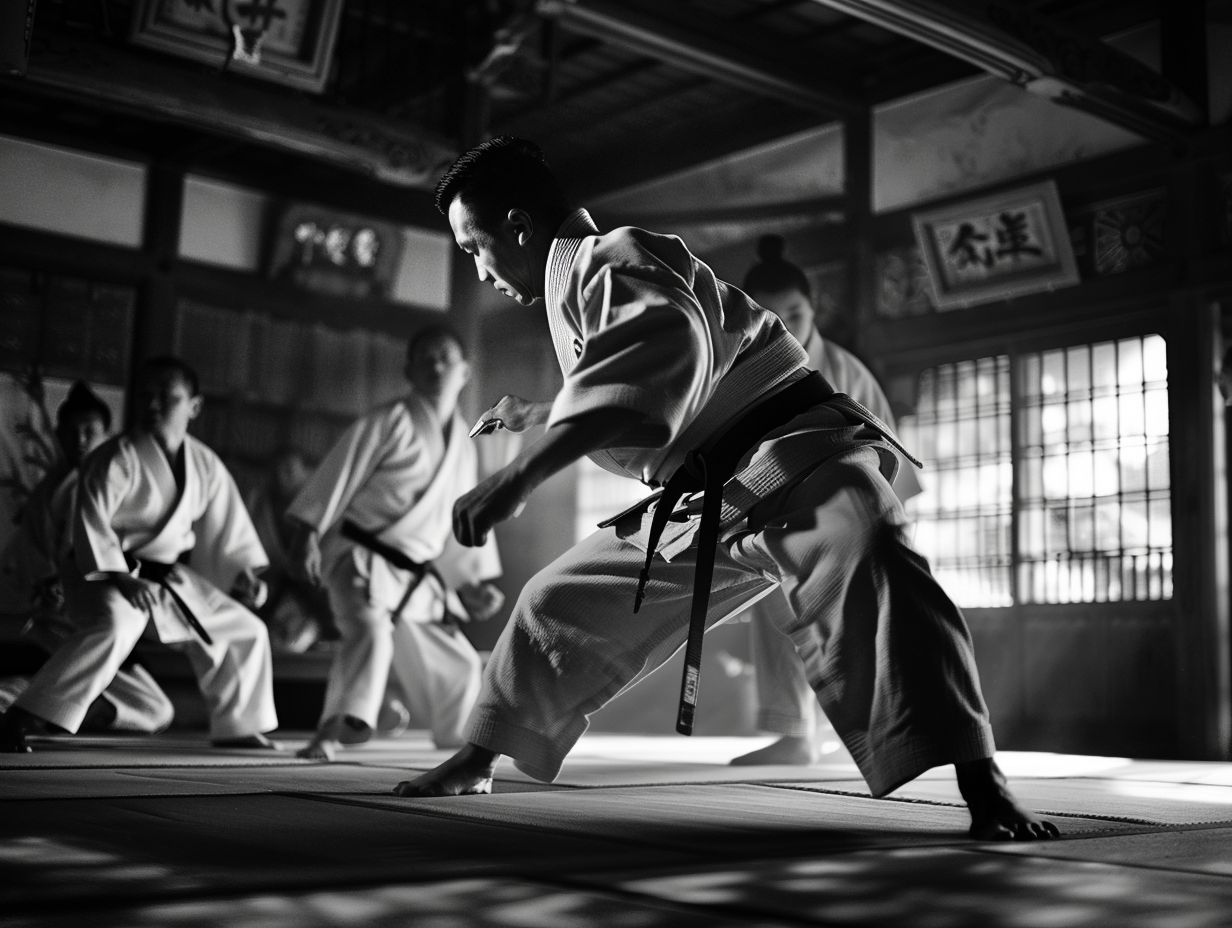
The history of Jiu Jitsu in Japan dates back centuries, evolving from traditional combative techniques practiced by Samurai warriors. These techniques were refined over time, leading to the development of a unique martial art that emphasized self-defense and strategic combat.
In the context of samurai culture, Jiu Jitsu was not only a means of combat but also a way of life, promoting discipline, honor, and respect. The incorporation of grappling, joint locks, and throws showcased the intricate and versatile nature of Jiu Jitsu techniques. As Japanese combat sports continued to evolve, Jiu Jitsu played a pivotal role in shaping the foundation for modern martial arts practices. Its historical significance transcends the boundaries of time, reflecting the enduring legacy of Japan’s martial heritage.
Early Forms and Influences
In the early days, Jiu Jitsu was all about Japanese martial arts history. Picture ancient warriors sharpening their combat skills and mastering the art of self-defense. They drew inspiration from traditional techniques and cultural customs, shaping Jiu Jitsu into its own unique form.
Fast forward through the centuries, and these early practitioners were on a mission to perfect their craft. They mixed in elements of grappling, striking, and joint locks, creating a well-rounded fighting style. Back in feudal Japan, where battlefield combat was a daily reality, Jiu Jitsu techniques had to be on point.
The spirit of bushido, the samurai code of honor, cast a long shadow over Jiu Jitsu. Discipline, respect, and humility were all part of the package. Through intense training and real-world experience, Jiu Jitsu transformed into a martial art that’s all about using leverage, mastering technique, and staying adaptable.
Development of Jiu Jitsu as a Martial Art
In terms of the development of Jiu Jitsu as a martial art, you can’t ignore the major players like the Gracie family and the Kodokan school. These folks played a big role in turning Jiu Jitsu from an old-school practice into a hip, dynamic sport that’s got deep cultural roots.
One key moment in Jiu Jitsu’s journey was when the Gracie family rolled out Brazilian Jiu Jitsu back in the early 20th century. This version of Jiu Jitsu really honed in on ground fighting and leverage moves, totally shaking things up in the martial arts scene.
The Gracies’ domination in mixed martial arts fights put Jiu Jitsu on the map worldwide, sparking new ideas for training and competition rules. As the sport kept getting bigger, fighters from all walks of life brought in fresh techniques, mixing traditional Jiu Jitsu with other martial arts styles. The result? A well-rounded, powerful fighting approach.
Rise of Samurai Culture and Training
When you delve into the history of Jiu Jitsu, you can’t ignore the impact of samurai culture in Japan. Samurai warriors were the OGs of martial arts training, learning techniques like Jiu Jitsu in specialized schools passed down through generations.
At these schools, honor and discipline were the name of the game. Loyalty, courage, and integrity were the key values instilled in every student. The samurai way of life, with its emphasis on mastering mind and body, heavily influenced how Jiu Jitsu practitioners trained.
By pushing through grueling physical workouts, building mental toughness, and honing situational awareness, students not only learned self-defense moves but also picked up essential values like respect and humility. The tradition of teachers passing down knowledge to their students ensured that the art of Jiu Jitsu stayed true and effective for centuries.
Integration with Other Fighting Styles
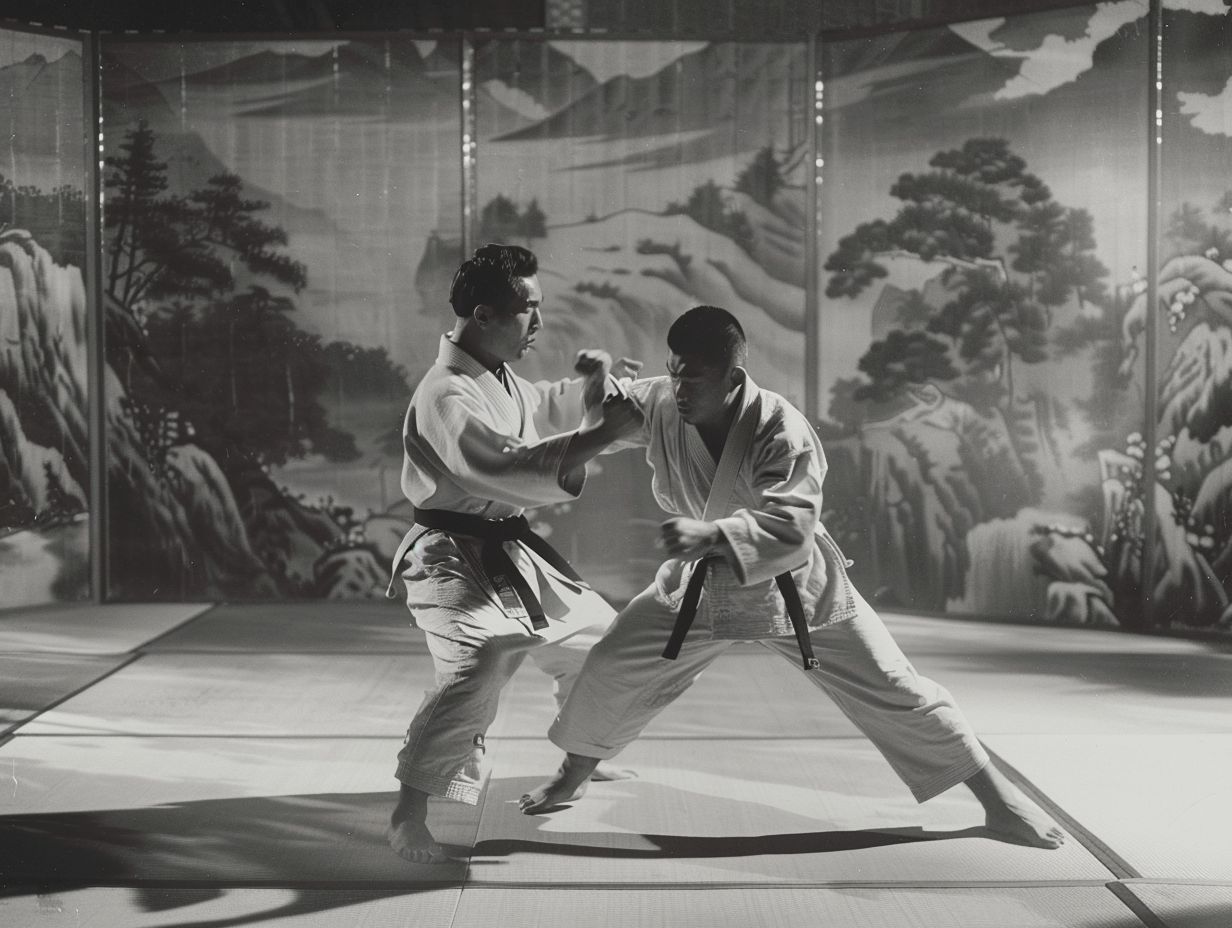
When you mix Jiu Jitsu with other fighting styles like Judo, you’re contributing to the evolution of Brazilian Jiu Jitsu (BJJ). This combo of techniques and philosophies enriches the martial arts traditions and opens up a whole new world of combat sports for you. By blending the ground-fighting skills of Jiu Jitsu with the throws and grappling moves of Judo, you’re able to craft a versatile and powerful martial art form. The focus on leverage, control, and submission holds in BJJ shows how both Jiu Jitsu and Judo have left their mark on it.
Over time, BJJ has grown into a dynamic discipline that’s not just about physical strength, but also about mental sharpness and strategic thinking. This shift in techniques and mindset cements the unique identity of Brazilian Jiu Jitsu in the martial arts scene.
Spread of Jiu Jitsu in Japan
The spread of Jiu Jitsu in Japan really took off thanks to martial arts schools that offered all-encompassing training programs. Competitions and tournaments played a big role in boosting Jiu Jitsu’s popularity, bringing in practitioners from all walks of life.
These tournaments aren’t just about showing off skills – they’re also great spots for learning and improvement. As Jiu Jitsu became more popular, specialized training centers popped up, catering to different levels of experience and interests among practitioners. This wider range of training options has led to more people getting involved, with enthusiasts attracted to the discipline’s deep history and its focus on both physical and mental development.
Popularization and Schools of Jiu Jitsu
As you dive into the world of Jiu Jitsu in Japan, you’ll see how this martial art has deep roots in the rich tradition of martial arts. The Jiu Jitsu schools were like treasure troves dedicated to preserving its history and promoting its practice.
Picture yourself stepping into one of these schools, not just to perfect your physical skills, but to soak in the philosophy and artistry of Jiu Jitsu. It wasn’t just about learning self-defense; it was a journey of discipline, respect, and finding that sweet spot where your mind, body, and spirit are in perfect harmony.
These schools were like time capsules, passing on the essence and legacy of Jiu Jitsu from one generation to the next. They kept the flame of Japanese martial arts culture burning bright, ensuring that the tradition lives on.
Modernization of Jiu Jitsu
You’ve probably noticed how Jiu Jitsu has evolved over time, right? The modernization of this martial art has brought some big changes in techniques and training methods to keep up with today’s sport standards. Thanks to innovations in teaching practices and competition formats, there’s a whole new vibe in the world of Jiu Jitsu.
And check this out – practitioners have started to get all science-y with their approach. They’re adding strength and conditioning programs that are custom-made to boost Jiu Jitsu performance. Plus, they’re diving into sports psychology to get their mental game on point for those intense matches.
But that’s not all! The evolution of instructional resources has been a game-changer. Online tutorials and seminars have made it super easy to spread knowledge and help athletes improve their skills. These advancements have not only raised the bar for competition in Jiu Jitsu but have also drawn in a whole new crowd of fans. It’s like Jiu Jitsu is taking over the world, one match at a time!
Changes in Techniques and Training Methods
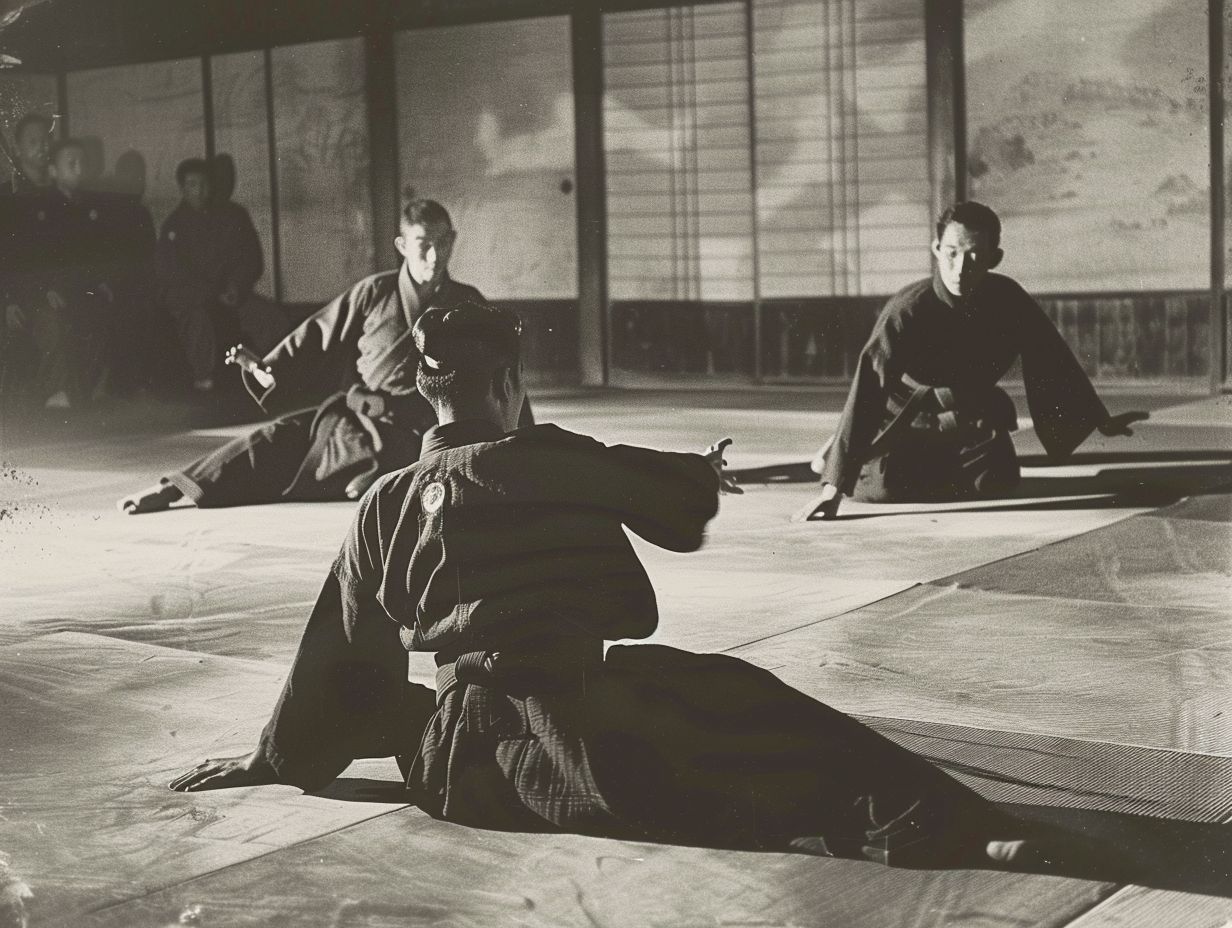
In terms of Jiu Jitsu, you’ll notice a shift towards a more practical use of self-defense techniques in tournaments. This change in approach has really shaken up the competitive side of Jiu Jitsu.
In today’s Jiu Jitsu tournaments, it’s not just about the physical moves. Mental strength is key. Practitioners focus on values like respect, discipline, and humility to guide how they train and compete. By incorporating these principles into their routines, they not only improve their physical abilities but also develop a mindset of always growing and bettering themselves. This all-encompassing approach has given rise to a new generation of athletes who not only dominate the technical side of the sport but also embody qualities like integrity and sportsmanship.
Impact of Jiu Jitsu on Japanese Culture
The impact of Jiu Jitsu on Japanese culture goes way beyond just the world of martial arts. It has left its mark on other combat sports and traditional customs, shaping the cultural landscape with its focus on discipline and respect, which are at the core of Japanese martial arts.
You see, these values of discipline and respect, which are at the heart of Jiu Jitsu’s teachings, have had a deep influence on Japanese society. The idea of self-improvement, perseverance, and humility that Jiu Jitsu instills has spread into many aspects of Japanese life, molding not only athletes but people from all walks of life. The philosophy of harmony and balance that Jiu Jitsu promotes has also made its way into Japanese aesthetics, traditional ceremonies, and even business practices, making it a rich cultural force that touches all aspects of life.
Influence on Other Martial Arts and Sports
The influence of Jiu Jitsu on other martial arts and sports in Japan has really left its mark on the landscape of martial arts development. Its historical significance and deep-rooted philosophy have added some serious depth to the history of Japanese martial arts.
You can see this strong connection through the shared philosophies and historical ties that bind Jiu Jitsu with other traditional martial arts in Japan. The values of discipline, respect, and constant self-improvement are like the OG principles that run through all kinds of martial arts practices.
As techniques and strategies evolved in Jiu Jitsu, they ended up shaping the development of other Japanese martial arts too. This whole process has created a culture of innovation and adaptability that’s spread throughout the wider martial arts community.
Globalization of Jiu Jitsu
The globalization of Jiu Jitsu has brought its rich heritage and competitive spirit to practitioners like you all over the world, creating a global community of athletes and enthusiasts. International tournaments and philosophical exchanges have played a key role in shaping the evolution of Jiu Jitsu on a global scale.
This centuries-old martial art, originally from Japan, has gained immense popularity across different continents by blending traditional techniques with modern training methods. The interconnectedness of the Jiu Jitsu community has made it possible for knowledge and culture to be exchanged, breaking through language barriers and geographical distances.
When practitioners from various backgrounds come together on the mats, they not only sharpen their physical skills but also embrace the core values of respect, discipline, and humility that are deeply rooted in the art.
The unity found in the Jiu Jitsu community is proof of the martial art’s ability to bring people together, fostering camaraderie and mutual growth among practitioners like yourself.
Frequently Asked Questions
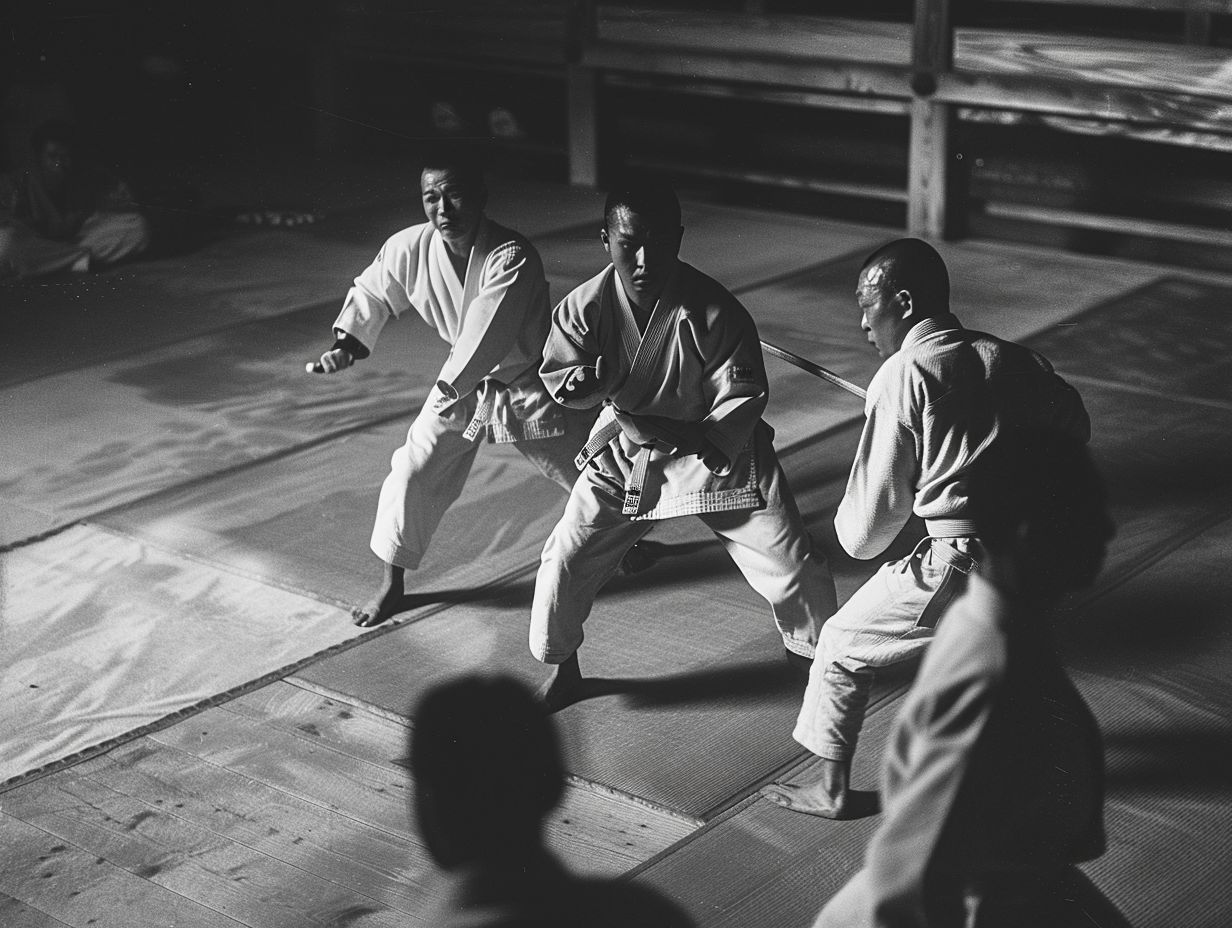
What is the history of jiu jitsu in Japan?
Jiu jitsu originated in Japan during the feudal period as a form of unarmed combat used by samurai warriors. It was developed to defend against armed opponents in close combat situations.
How was jiu jitsu practiced in Japan?
Originally, jiu jitsu was taught and practiced in secret by select families and clans. It was passed down through generations and often kept within the same family or clan.
When did jiu jitsu become popular in Japan?
Jiu jitsu gained popularity in the late 19th century during the Meiji restoration, when Japan opened up to western influences. It was often practiced by the police and military and eventually spread to the general public.
What role did jiu jitsu play in the development of martial arts in Japan?
Jiu jitsu has had a significant impact on the development of martial arts in Japan. It served as the foundation for other martial arts such as judo, aikido, and karate.
Why did jiu jitsu decline in popularity in Japan?
In the early 20th century, jiu jitsu faced a decline in popularity due to the rise of more modern and competitive martial arts. However, it experienced a resurgence in the 1990s with the popularity of mixed martial arts.
How has jiu jitsu evolved in modern Japan?
In modern times, jiu jitsu has become a popular self-defense and combat sport in Japan. It has also been influenced by other martial arts, leading to the development of different styles and techniques.

